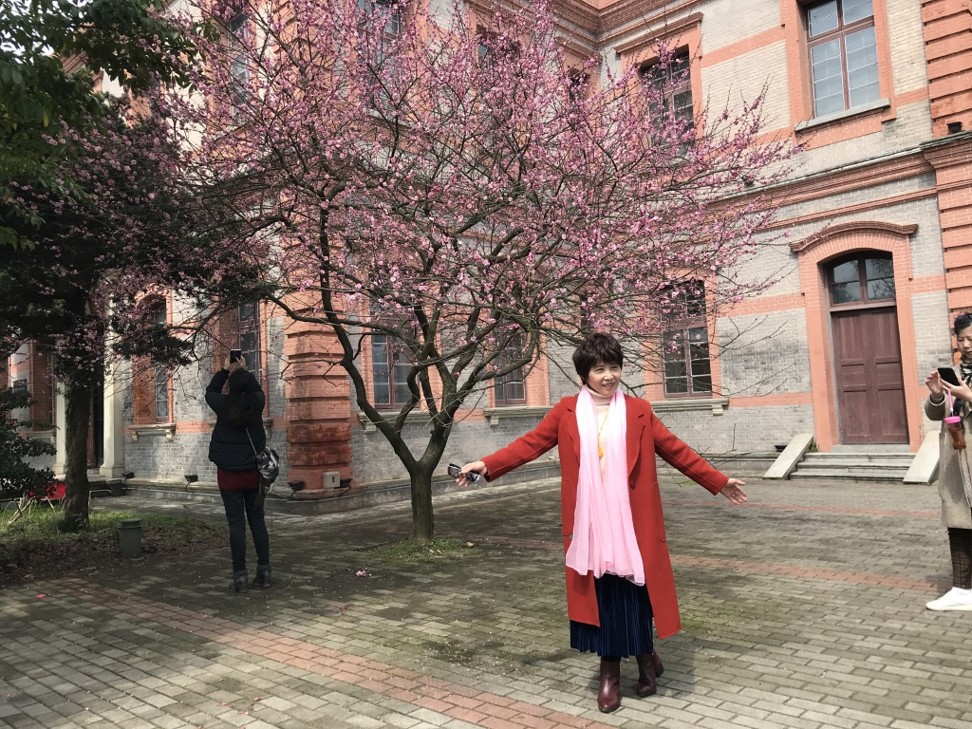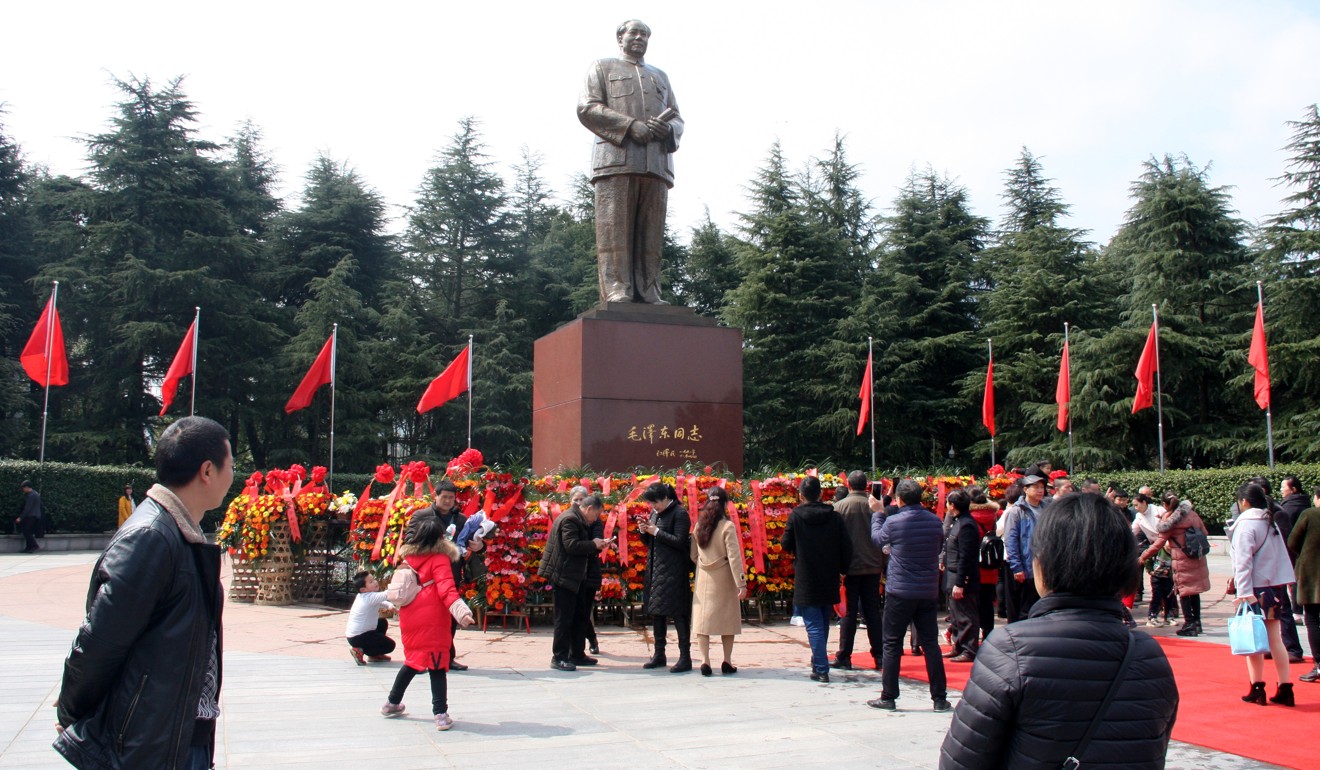
In Changsha, China, a British writer finds clues to his own history and that of Chairman Mao
- The Hunan provincial capital bears its association with the nation’s most famous son proudly
- Despite the introduction of modern industries, the city retains a feeling of yesteryear
As an inland city, Changsha lacks the glamour and sophistication of coastal metropolises, but therein lies its appeal. Rubbing shoulders with locals who boast of being laid back and friendly, a visitor can recapture the flavour of yesteryear China.
Even as industries such as engineering machinery, electronic information and carmaking are developed in the capital of Hunan province, a giant bust of Mao Zedong, on Orange Island, reaffirms its ties to the founder of the People’s Republic, who was born nearby, went to school in Changsha and began his revolutionary career here.
The 5km-long island lies in the Xiang river, which divides Changsha, and has long been distinct from the city around it. It is now a large recreational park, offering respite from the urban hustle and bustle. Just a few decades ago, though, this sandbar was home to a community of foreigners, with imposing European-style buildings and spacious lawns. The contrast with the walled city across the water, with its narrow, congested lanes, was stark.
Only a few buildings from those times survive: the custom commissioner’s residence, a group of structures that belonged to Seventh Day Adventist missionaries in the 1920s, and which are now used as restaurants, and a pair of restored two-storey American greystone villas once occupied by executives of the Standard Oil Company of New York, which stand at opposite ends of a spacious lawn.

I have come to the tourist centre on Orange Island with an unusual request. Through our guide, I tell officials that, after Changsha became a treaty port, in 1904, my English grandfather lived on this island while working for the China Post Office. He was acting postal commissioner from 1915 to 1919. My Aunt Dolly recalled her father, Frank Newman, departing for work in a motor launch with Chinese staff in blue-and-white sailor uniforms.
The officials are pleased to hear the story but, when I ask for help in learning more, they apologise for having little documentation from that period.
Calamity has robbed Changsha of much of its history. The catastrophic fire of 1938 – started in several places as a “scorched earth” policy against advancing Japanese forces – killed 30,000 people and destroyed more than 90 per cent of the city, including the Ming dynasty Tianxin Tower and other buildings of historic interest. Conflicts – the Taiping rebellion, war with Japan, the Kuomintang-Communist battles and the Cultural Revolution – took a further toll on the city’s heritage.

The former customs commissioner’s residence is now a museum and is a short walk from the tourist office, in the centre of Orange Island. It’s closed on Mondays, the day of our visit, but a tourist officer opens it especially for us. Newman would have been a frequent visitor.
The restored two-storey ochre building retains its English colonial style, with deeply recessed verandas on both floors and stone walls designed to combat Changsha’s fierce summer heat. Inside, a photo display describes how the first customs house in the city opened in 1904, following the arrival of foreigners in the wake of unequal treaties imposed by military force. The foreigners were resented as intruders but appreciated for what they brought: trade and income, steamships and railways, electric lamps and health clinics, and a host of ideas.

The Newman home would have been part of a sizeable cluster of foreign residences and consulates. There is nothing to indicate what it looked like but it probably would have been similar to the residence of the customs commissioner in style.
From the island’s eastern embankment, which used to be a beach, I look beyond the skyline of tall buildings and conjure up my mother’s journey of a century ago: a gowned man emerging from a gate of the walled city, treading down stone steps and stepping into a sampan to cross a river alive with junks.
In 1918, while opposing warlords were fighting for control of Hunan, Newman was caught up in the mayhem in Changsha, writing to his boss that he had barred the post office’s heavy doors against widespread looting.
Nearly a decade later, Changsha saw Mao play a leading role in the 1927 Communist Autumn Harvest Uprising, before Nationalist troops drove the Reds to regroup in the mountains on the border of Hunan and Jiangxi.

Eighty kilometres southwest of Changsha is Shaoshan, birthplace of the Great Helmsman. It has become a sizeable town (population 120,000), partly as a result of its association with Mao.
Having arrived by car, we join the stream of people passing through the 18 rooms and work sheds in which he grew up as the son of a well-to-do farmer. In the kitchen, with its stove and table, a sign explains that the young Zedong would hold family meetings here, urging his relatives to devote themselves to the liberation of the people. In his bedroom are the bed, desk and wardrobe Zedong himself used. In front of the farmhouse is a large pond where lotuses bloom and the boy fished.
A short, tree-lined trail leads to Mao Square, a vast rectangular concreted area that, we are told, is packed on days such as Mao’s birthday (December 26) and during Lunar New Year. Even today, there are hundreds of people here, some of whom buy expensive wreaths to place at the foot of the giant statue of the chairman at the end of the square. Others stand before him with hands clasped in prayer.

Having defied the ravages of Changsha’s history, the 1,000-year-old Yuelu Academy lies at the foot of the 300-metre Yuelu Mountain, on the west bank of the Xiang river. Though destroyed several times by war, it has remained one of the most important research centres in China.
Now known as Hunan University, the campus includes a lecture hall with a podium for teachers and characters on the walls proclaiming the Confucian virtues of loyalty, integrity, respect for elders and self-discipline. A highlight is the vermilion temple, with tall wooden columns supporting a broad roof that curves upwards at the outer edges, to ward off evil spirits. Behind the campus is a traditional garden and a pond stocked with carp.
In the south of Changsha stands the restored Tianxin Pavilion. It consists of a three-storey main pavilion and a pair of two-storey structures atop a rebuilt part of the ancient city wall, behind ramparts bristling with cannon. A long flight of original stone steps leads down to a park, where a group of people are practising tai-chi.

The Kaifu Temple, in central Changsha, is said to predate the city. After negotiating our way through the mendicants hovering around the entrance, we cross a bridge over a swan-thronged river, transitioning from the cacophony of the streets to the tranquillity of the sacred world. In a temple, supplicants kneel in front of Buddha; in a hall, devotees chant in procession; and into a raging furnace visitors cast red-wrapped gifts, hoping for good fortune.
A walk behind the gleaming mall complex that includes our hotel in downtown Changsha is a throwback to the past. In narrow streets between dingy alleys, women squat on the pavement offering vegetables for sale and a cook wields a wok behind a small stall, the pungent smells of garlic and the spices that flavour Hunanese cooking assailing our nostrils. Above the hubbub comes the clackety clack of mahjong tiles from an unseen apartment.

In its drive to modernise, it is unclear how long Changsha will retain its small-town feel.
“Every year, more old wooden structures make way for modern developments,” says our guide. “I am not sure people care enough about our history.”
For the time being, though, traces of that history can be found – if you look hard enough.

